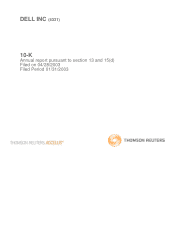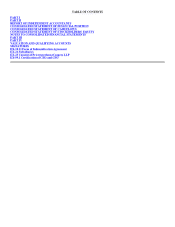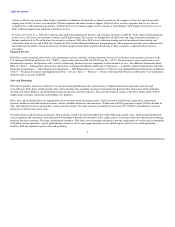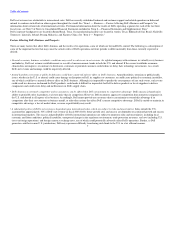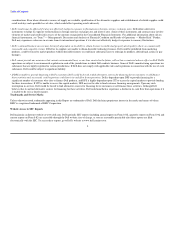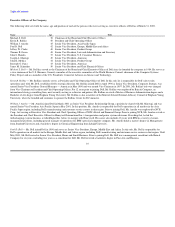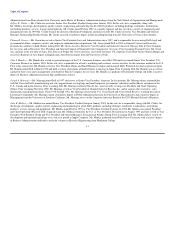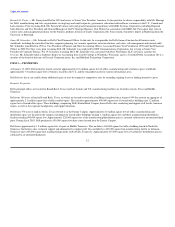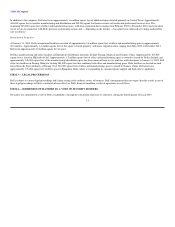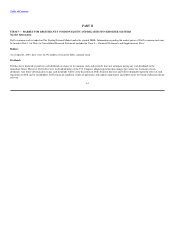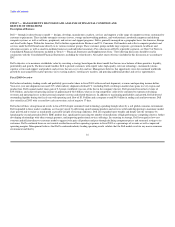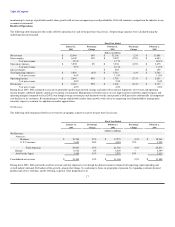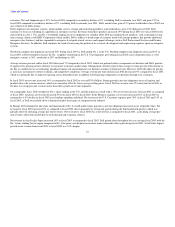Dell 2002 Annual Report Download - page 11
Download and view the complete annual report
Please find page 11 of the 2002 Dell annual report below. You can navigate through the pages in the report by either clicking on the pages listed below, or by using the keyword search tool below to find specific information within the annual report.
Table of Contents
• Dell's overall profitability may not meet expectations if its product, customer and geographic mix is substantially different than anticipated. The profit
margins realized by Dell vary among its products, customers and geographic markets. Consequently, if Dell's mix of any of these is substantially different
from what it anticipates in any particular period, Dell's earnings could be less than expected.
• Dell's net revenue may not meet expectations if it is unable to accurately predict the effect of seasonality on its business. Dell experiences seasonal trends in
the sale of its products. For example, sales to governments (particularly U.S. federal sales) are often stronger in Dell's third quarter, European sales are often
weaker in the third quarter and consumer sales are typically stronger in the fourth quarter. As Dell increases its market share in the highly seasonal consumer
market, this seasonal effect may become more pronounced. If Dell is not able to accurately anticipate seasonal trends, Dell's net revenue and earnings could
be less than expected.
• Infrastructure failures could have a material adverse effect on Dell's business. Dell is highly dependent on its infrastructure in order to achieve its business
objectives. If Dell experiences a problem that impairs its infrastructure, such as a computer virus, intentional disruption of IT systems by a third party,
manufacturing failure or telephone system failure, the resulting disruptions could impede Dell's ability to book or process orders, manufacture and ship in a
timely manner or otherwise carry on its business in the ordinary course. Any such events could cause Dell to lose significant customers or revenue and could
require Dell to incur significant expense to eliminate these problems and address related security concerns. Further, because Dell's sales are not generally
linear during any particular quarterly period, the potential adverse effect resulting from any such events or any other disruption to Dell's business could be
accentuated if it occurs during a disproportionately heavy demand or shipping cycle during any quarterly period.
• A failure on the part of Dell to effectively manage a product transition will directly affect the demand for Dell's products and the profitability of Dell's
operations. The technology industry is characterized by continuing improvements in technology, which result in the frequent introduction of new products,
short product life cycles and continual improvement in product price/performance characteristics. Product transitions present some of the greatest
executional challenges and risks for any technology company. Accordingly, if Dell is unable to effectively manage a product transition, its business and
results of operations could be negatively affected. In addition, continuing technological advancement, which is a significant driver of customer demand, is
largely beyond Dell's control.
• Disruptions in component availability could unfavorably affect Dell's performance. Dell's direct business model gives it the ability to operate with reduced
levels of component and finished goods inventories. Dell's financial success in recent periods has been due in part to its supply chain management practices,
including its ability to achieve rapid inventory turns. However, because Dell maintains only minimal levels of component inventory, Dell's financial
performance, as well as its ability to satisfy customer needs, could be negatively affected if it suffers a disruption in component availability.
• Dell's reliance on suppliers creates risks and uncertainties. Dell's manufacturing process requires a high volume of quality components that are procured
from third party suppliers. Reliance on suppliers, as well as industry supply conditions, generally involves several risks, including the possibility of defective
parts (which can adversely affect the reliability and reputation of Dell's products), a shortage of components and reduced control over delivery schedules
(which can adversely affect Dell's manufacturing efficiencies), and increases in component costs (which can adversely affect Dell's profitability).
• Dell could experience manufacturing interruptions, delays or inefficiencies if it is unable to timely and reliably procure components from certain single-
sourced suppliers. Dell maintains several single-source supplier relationships, either because alternative sources are not available or the relationship is
advantageous due to performance, quality, support, delivery, capacity or price
8

